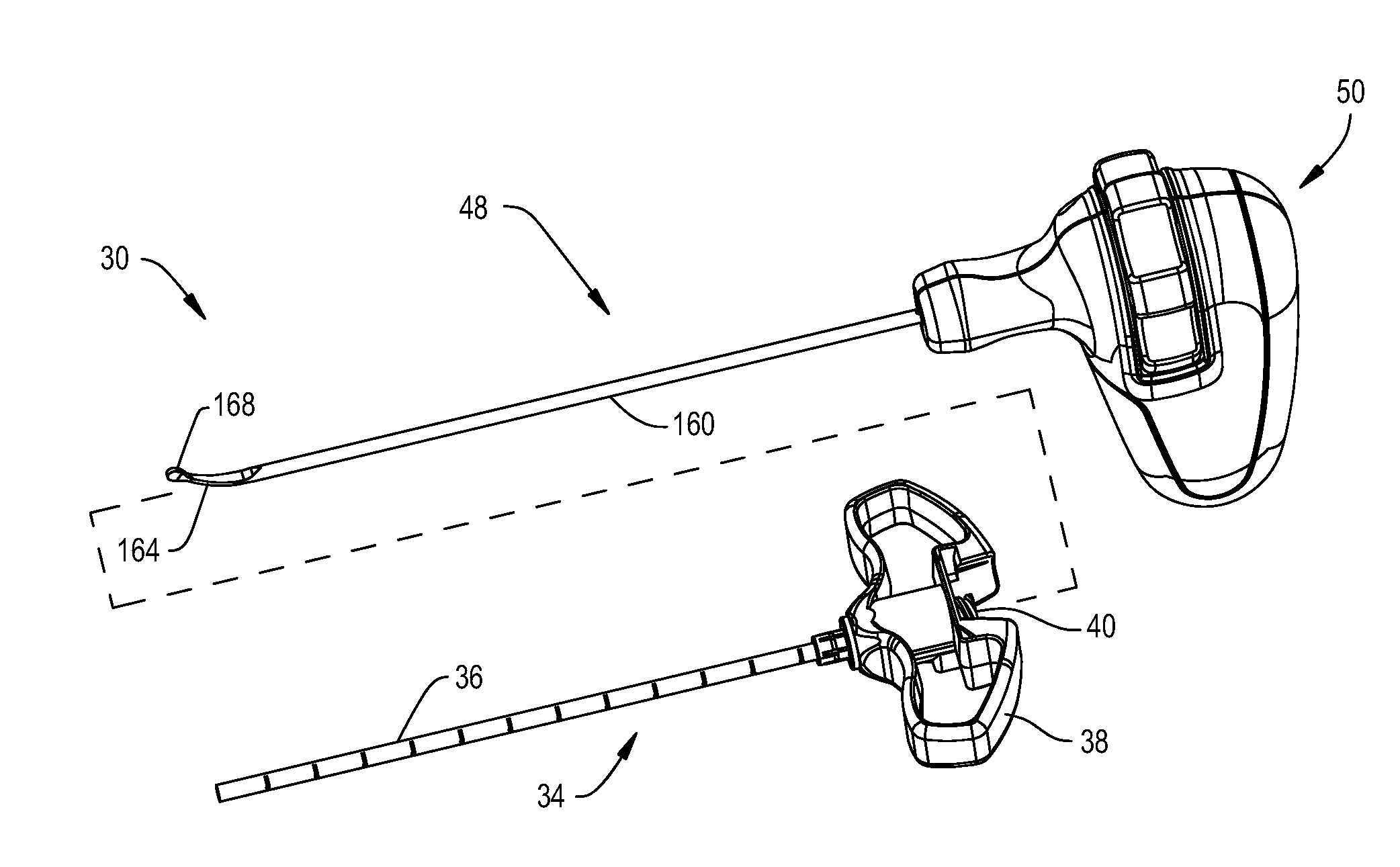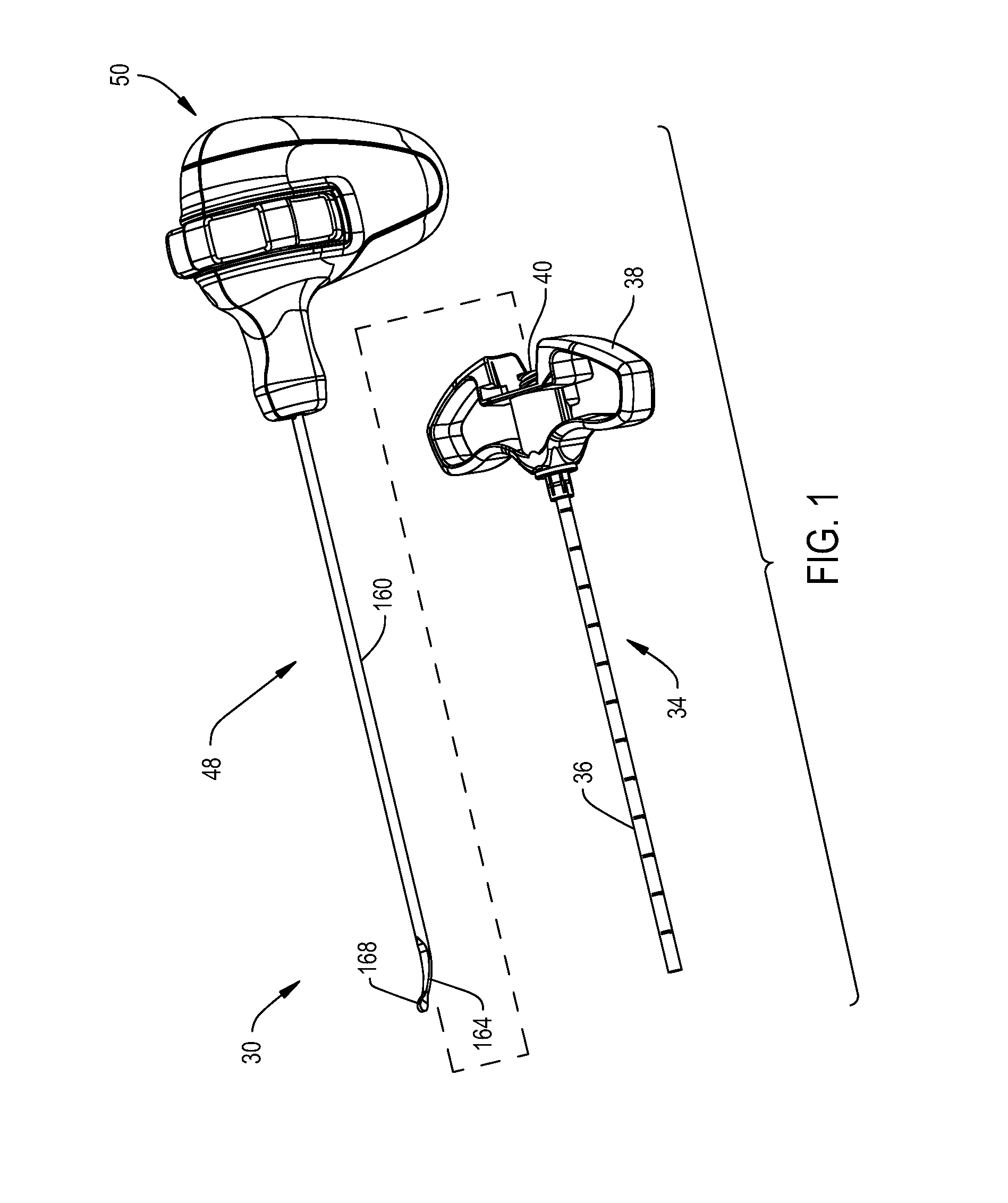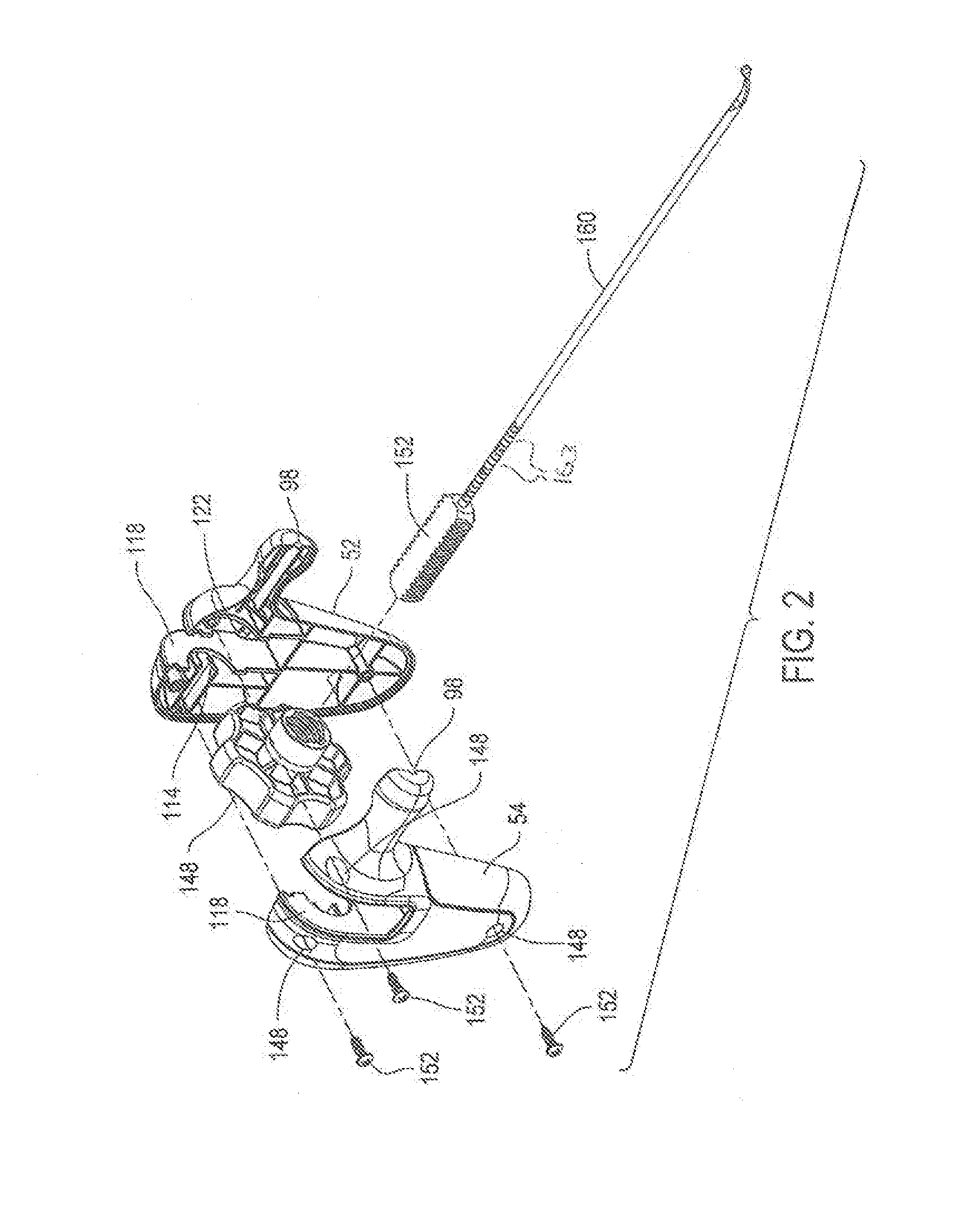Device for creating a void space in a living tissue, the device including a handle with a control knob that can be set regardless of the orientation of the handle
a technology of living tissue and void space, which is applied in the field of devices for creating void spaces in living tissues, can solve the problems of increasing the cost of providing the device, difficult to set this type of curette, and inability to easily set the extended state position of the drive rod in the internal components
- Summary
- Abstract
- Description
- Claims
- Application Information
AI Technical Summary
Benefits of technology
Problems solved by technology
Method used
Image
Examples
Embodiment Construction
I. Cavity Creator with First Curette
[0044]FIG. 1 depicts the components forming a cavity creator 30 of this invention. Specifically, cavity creator 30 includes an access cannula 34 and a curette 48. The access cannula 34 includes a tube 36 formed from material able to penetrate both soft tissue and hard tissue (bone). The distal end of tube 36 may have beveled edge to facilitate the insertion of the tube into the patient. (Here, “distal” is understood to mean away from the practitioner holding the cavity creator 30, towards the site to which the cavity creator is applied. “Proximal” is understood to mean towards the practitioner and away from the site to which the cavity creator 30 is applied.) A handle 38 is molded or otherwise secured over the proximal end of tube 36. The handle 38 is formed with a fitting 40 that opens into the lumen internal to tube 36. While not identified, the fitting is formed with threading. The threading facilitates the releasably coupling of either a cannu...
PUM
 Login to View More
Login to View More Abstract
Description
Claims
Application Information
 Login to View More
Login to View More - R&D
- Intellectual Property
- Life Sciences
- Materials
- Tech Scout
- Unparalleled Data Quality
- Higher Quality Content
- 60% Fewer Hallucinations
Browse by: Latest US Patents, China's latest patents, Technical Efficacy Thesaurus, Application Domain, Technology Topic, Popular Technical Reports.
© 2025 PatSnap. All rights reserved.Legal|Privacy policy|Modern Slavery Act Transparency Statement|Sitemap|About US| Contact US: help@patsnap.com



